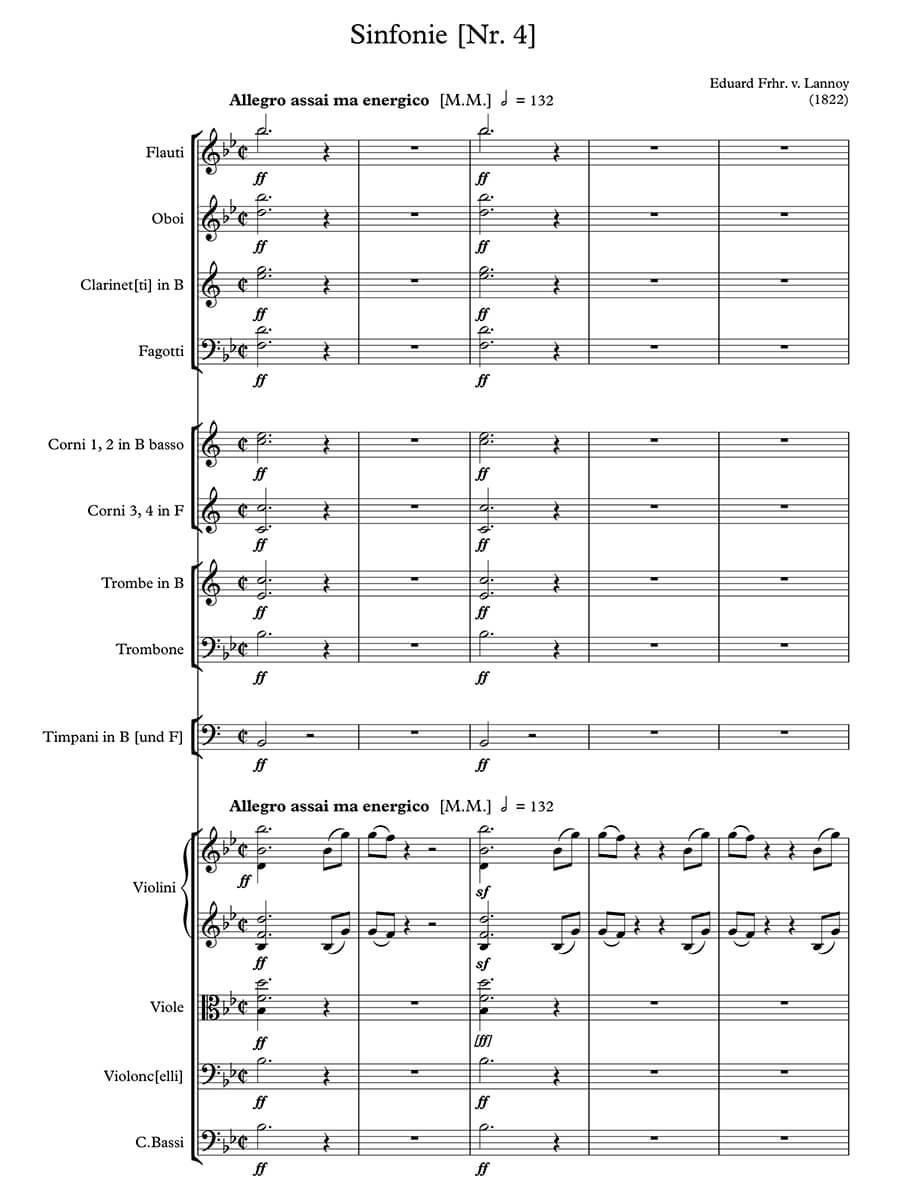Symphony No. 4 (Urtext / first print)
Lannoy, Heinrich Eduard Josef von
47,00 €
Heinrich Eduard Josef von Lannoy – Fourth Symphony
(geb. Brüssel , 3. Dezember 1787 – gest. Wien, 28. März1853)
Preface
Heinrich Eduard Josef von Lannoy1 belongs to a “tradition-steeped dynasty” of “statesmen and military leaders.”2 His father held various high positions in the Dutch administration. Eduard first resided in Graz from 1796 to 1801, where he completed his high school education and a year of university studies. Thereafter in Brussels, he studied philosophy, mathematics, jurisprudence and languages amongst others, and learned composition and various music instruments. From 1806, his family resettled in Styria. In 1808, his father purchased the “Wildhaus estate” (today: Viltovž) near Marburg (today: Maribor, Slovenia), through which Eduard, already a knight of the royal Hungarian Order of Saint Stephen, became a baron.
Eduard first appeared as a writer and was recommended for the position of chair for mathematics at the Joanneum, Graz with the support of Archduke Johann. From 1814, the first operas were performed. In 1819, he married Magdalena Katharina Josephine von Carneri – with Archduke Johann as witness. He was already a respected musician in Graz – he was appointed honorary member of the Styrian Music Society in 1820. Furthermore, he was a celebrated conductor in Vienna, where he spent the concert seasons since 1818. He was actively involved with the Gesellschaft der Musikfreunde, organized (from 1824) and led (from 1829) the Concerts spirituels, whose programmes included plenty of Beethoven, Haydn and Mozart, and was appointed to the management board of the conservatory. As a conductor and an ardent admirer of Beethoven’s, he promoted the dissemination of the composer’s works. Almost every concert he conducted featured a work of this great master, including many premieres. His admiration for Beethoven and the associated high aspirations presumably resulted in Eduard’s reduced compositional activity from the mid-1830s.
Between 1820 and 1822, he composed four symphonies (the third bears the title Lara – after the dramatic poem from Lord Byron – which as programme music, nine years preceding Berlioz’ Symphonie fantastique, is already interesting from a music historical perspective alone), then from 1822 to 1826 the group of works which established Lannoy’s success and especially his contemporary fame: evening-length, orchestra-accompanied Melodramas. These works were also performed outside of Austria and even up until his death. The most successful of which – the very first: Ein Uhr oder der Zauberbund um Mitternacht – was performed over 150 times in Vienna alone up until 1860 and even inspired a follow-up from Ph. K. Riotte: Zwei Uhr. …
Read full preface > HERE
| Score No. | |
|---|---|
| Edition | |
| Genre | |
| Size | |
| Performance Materials | |
| Printing | |
| Pages |
